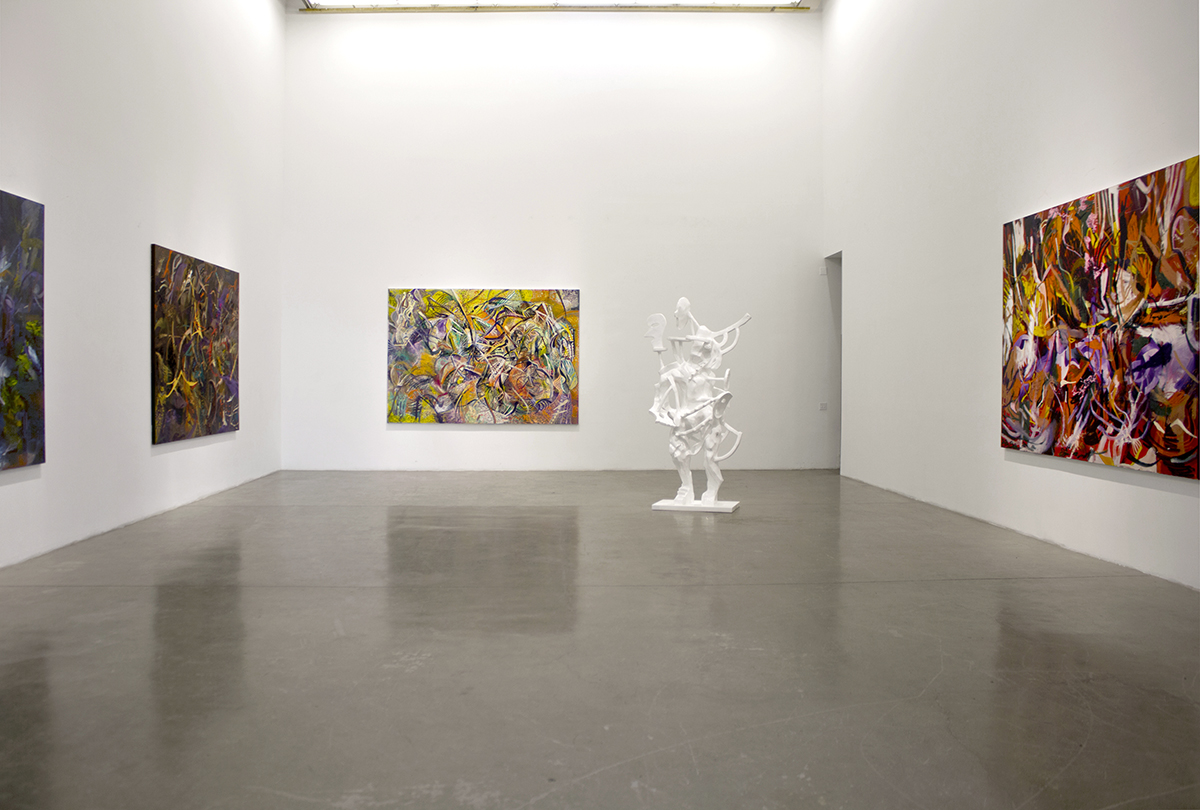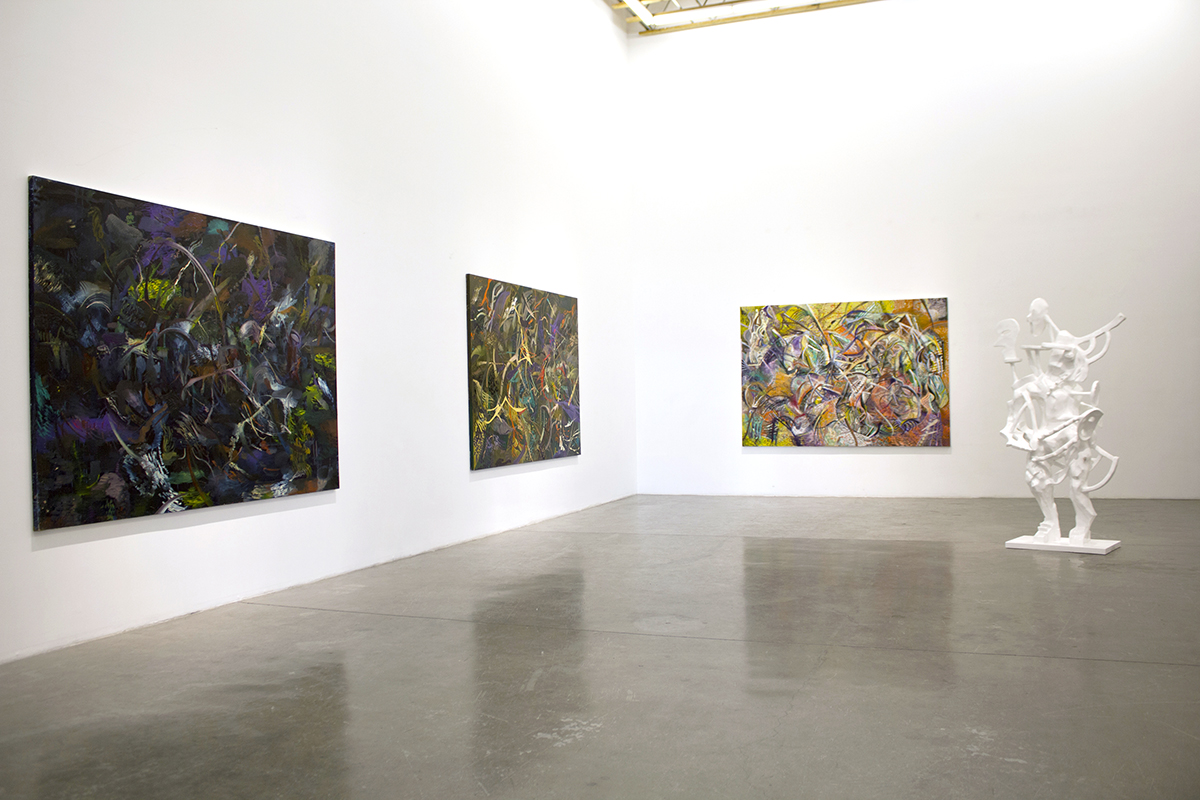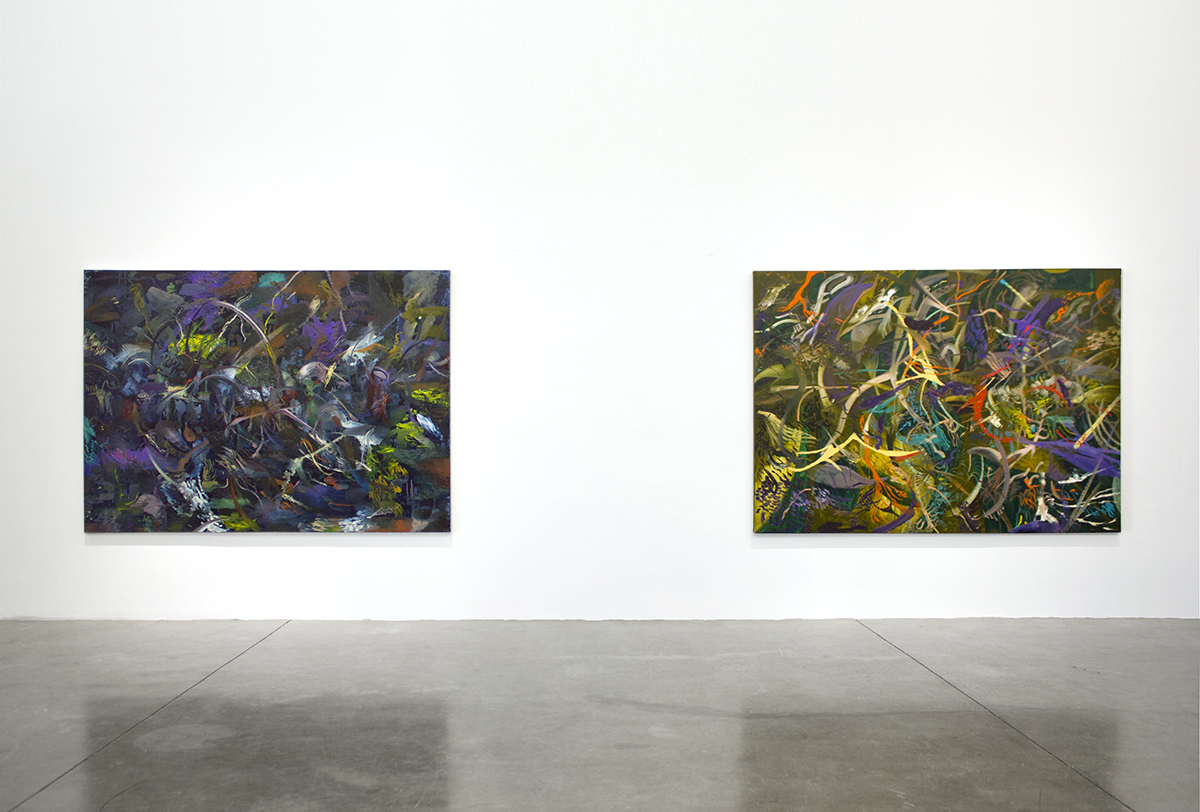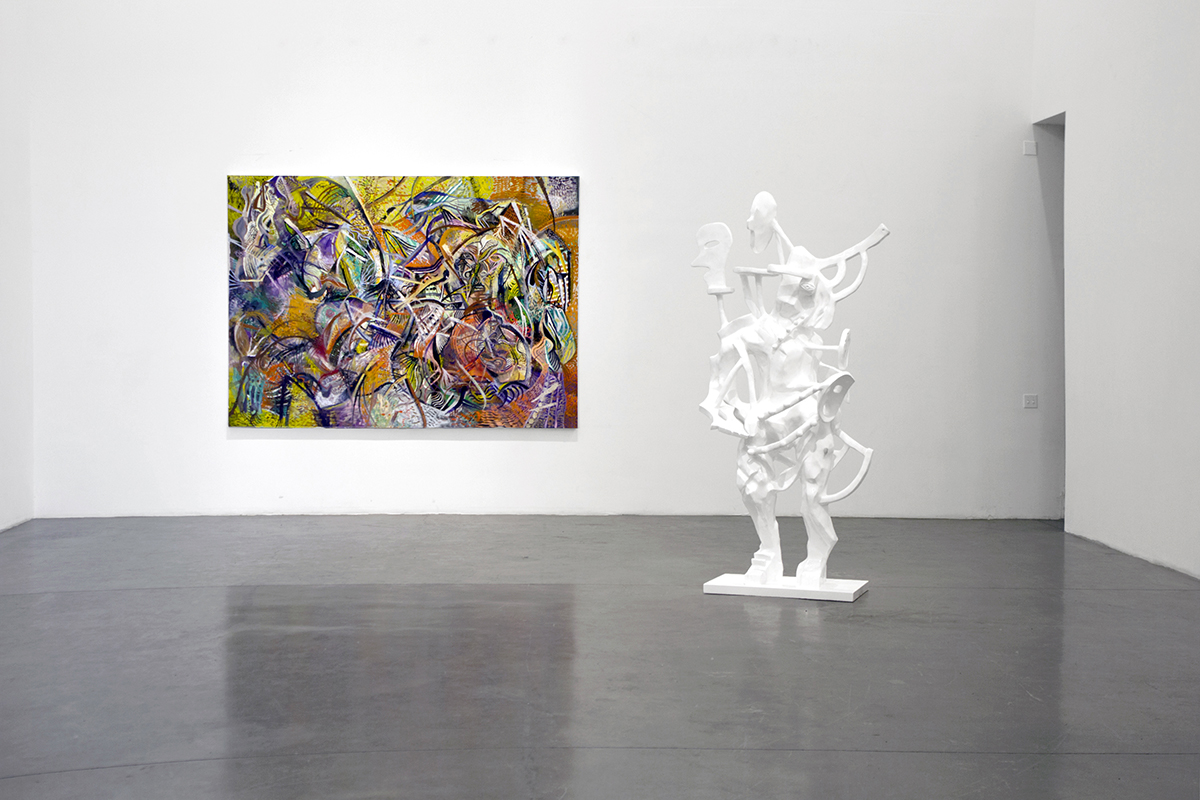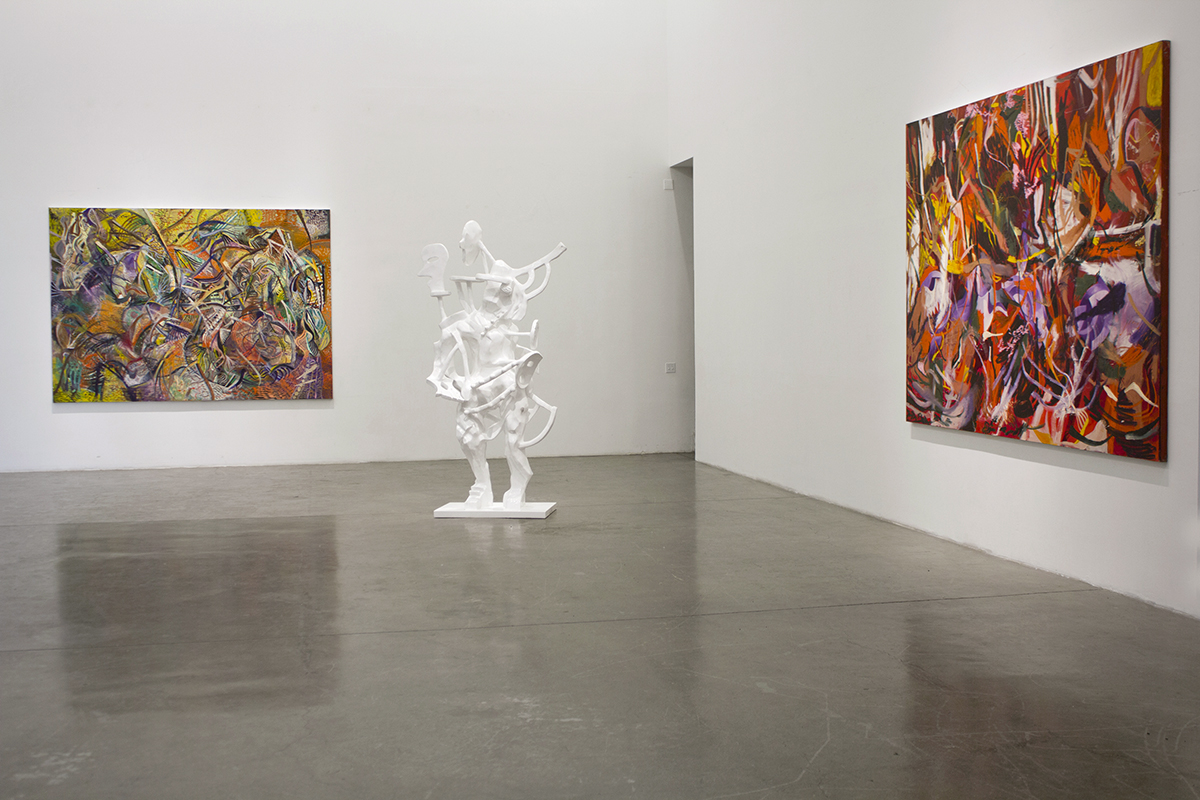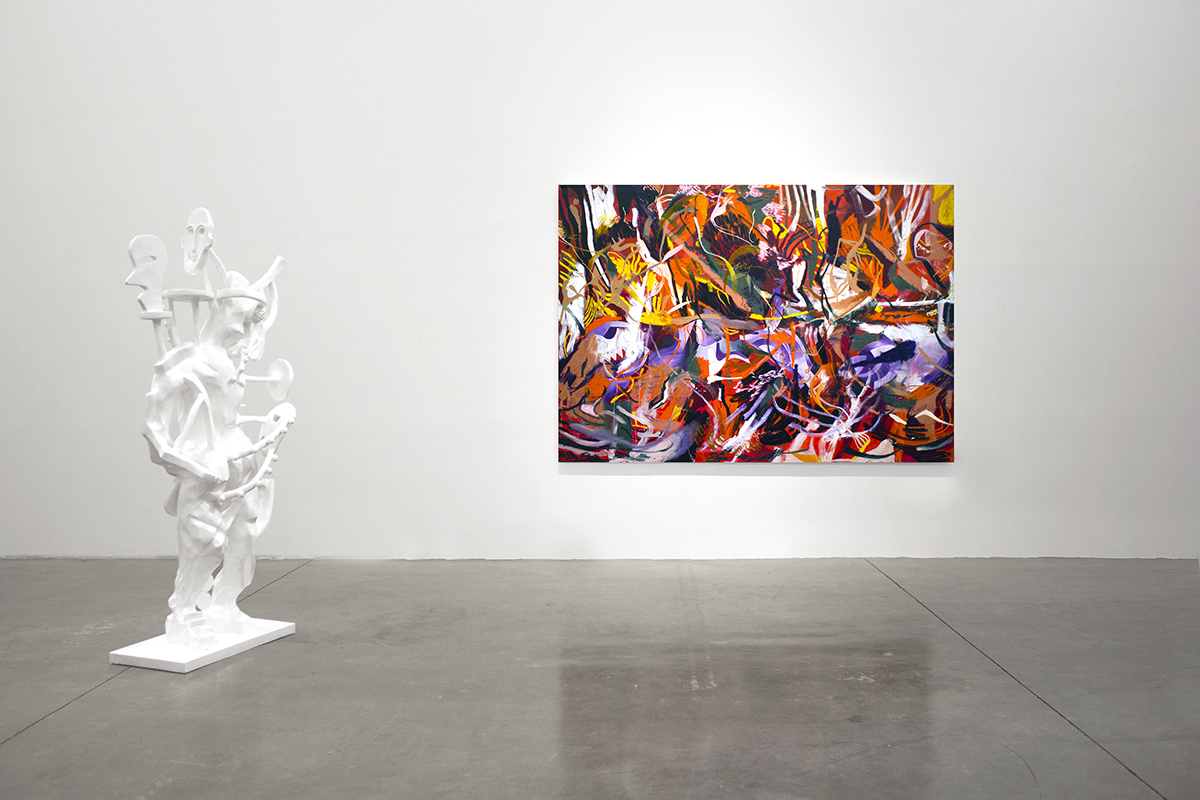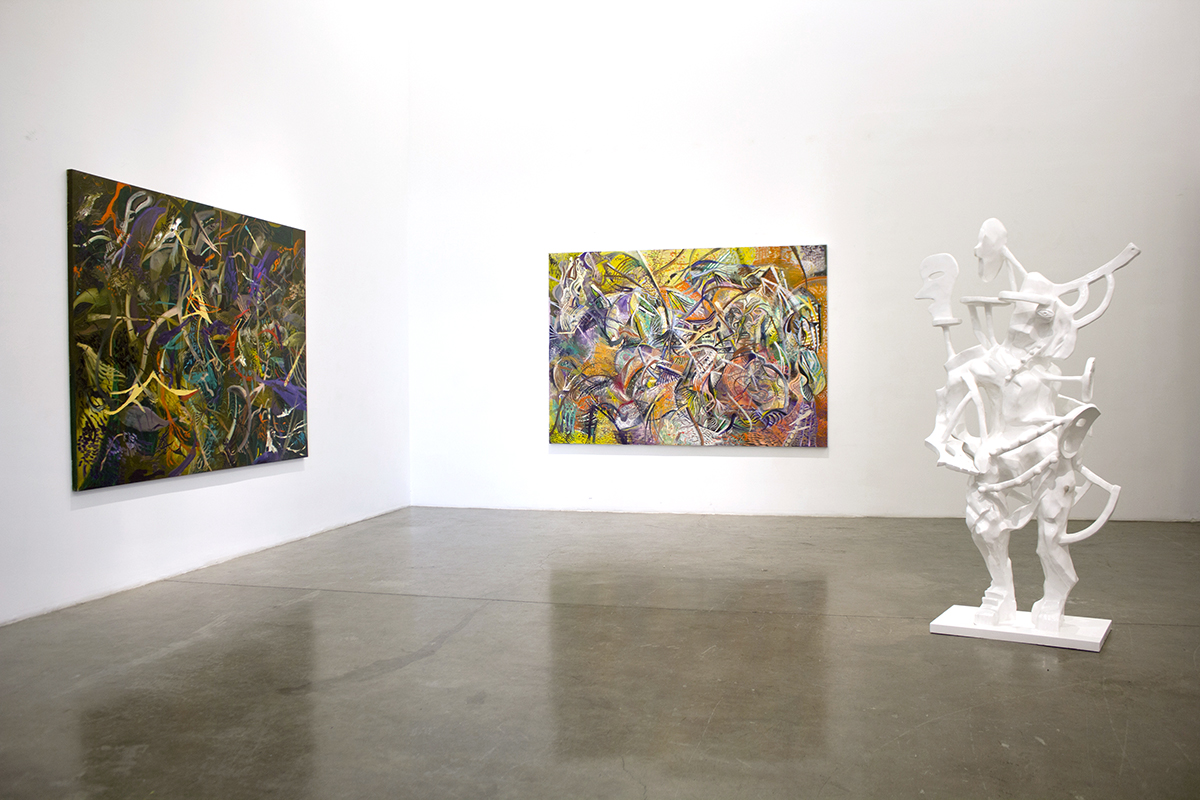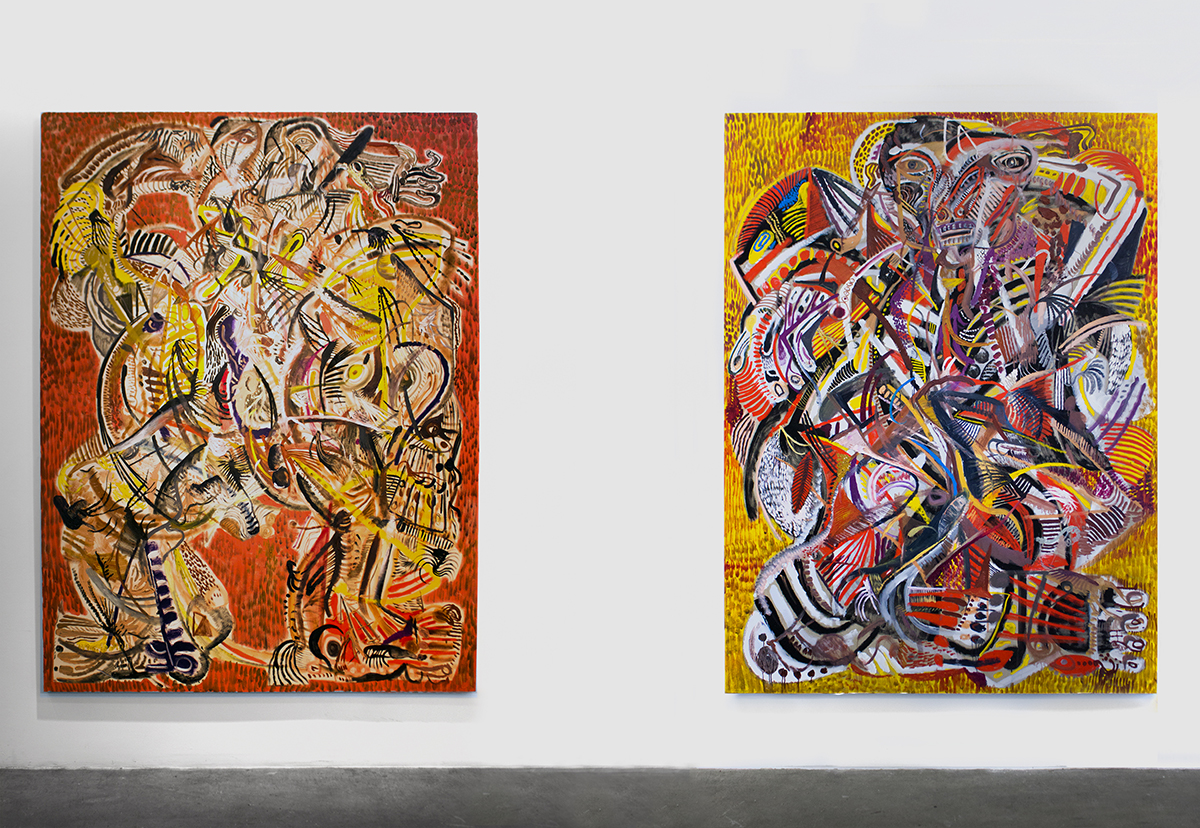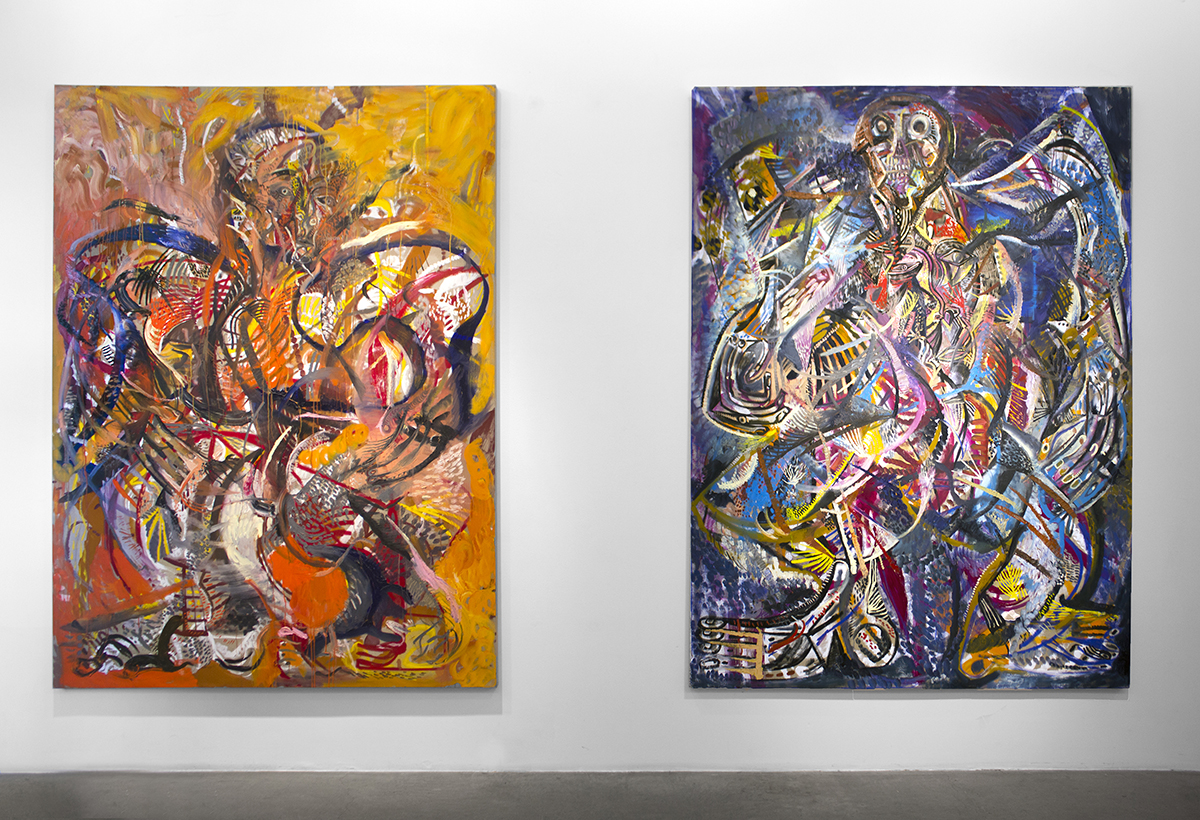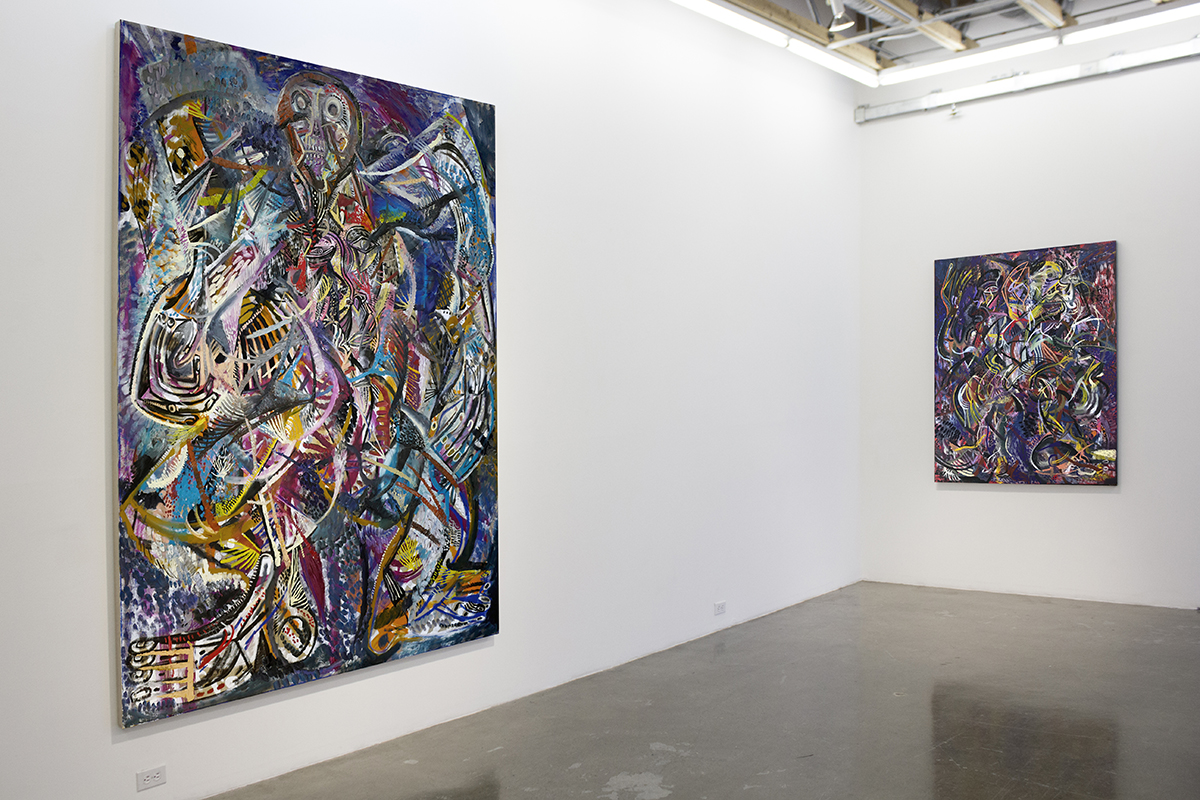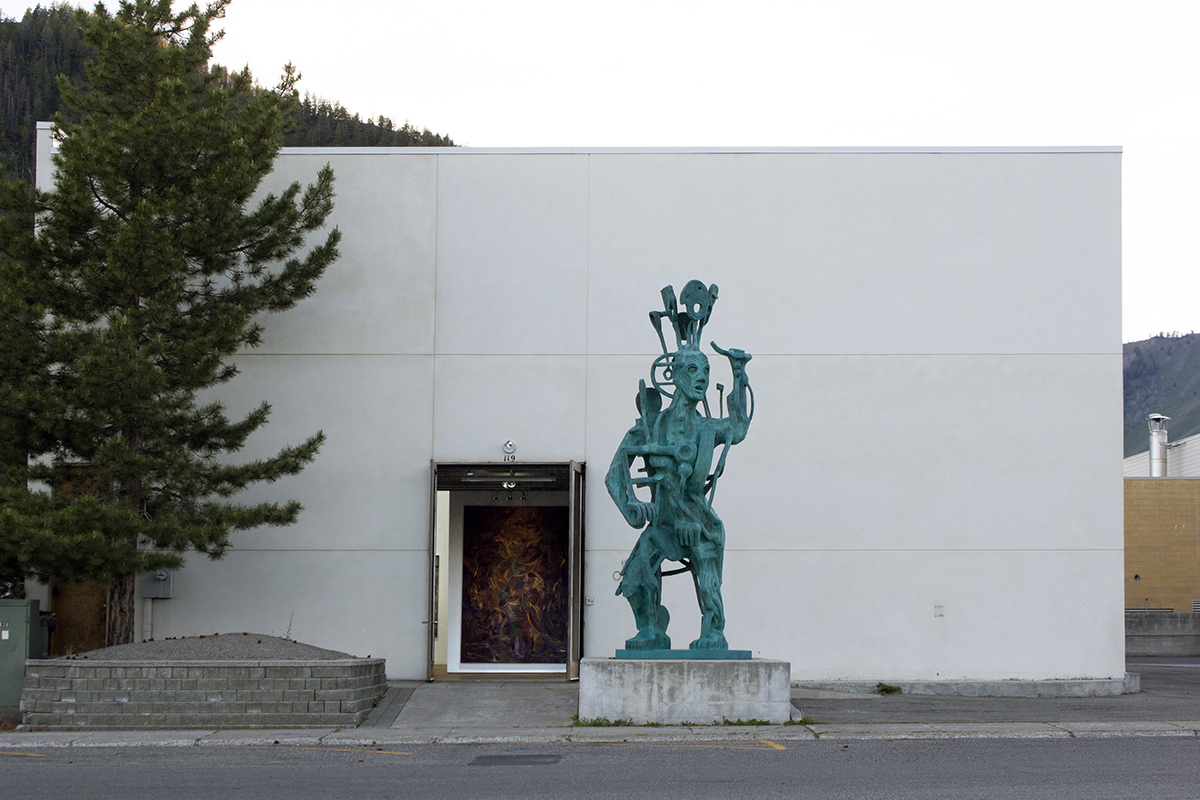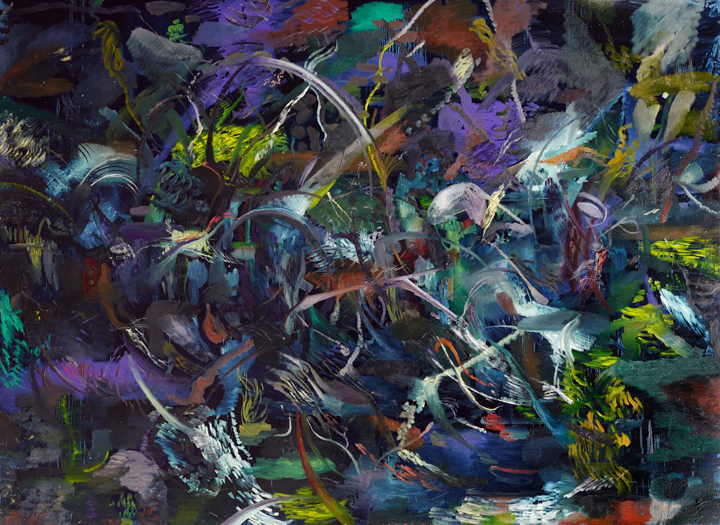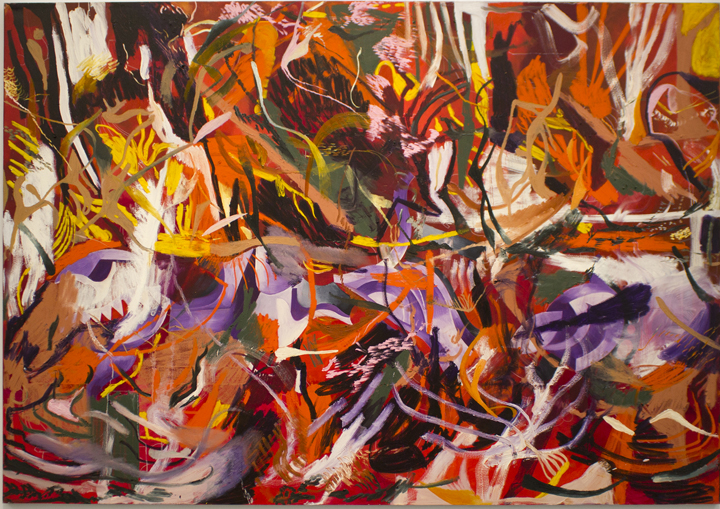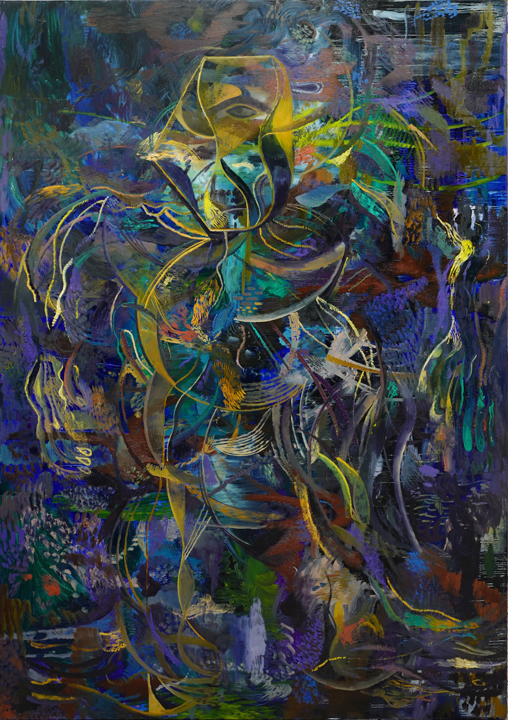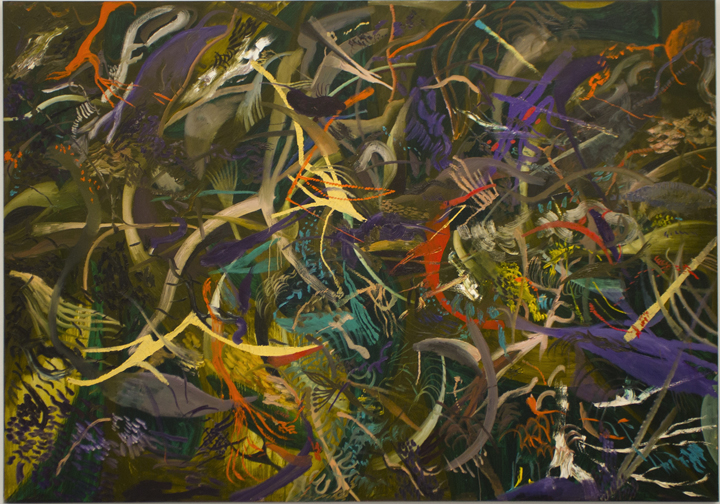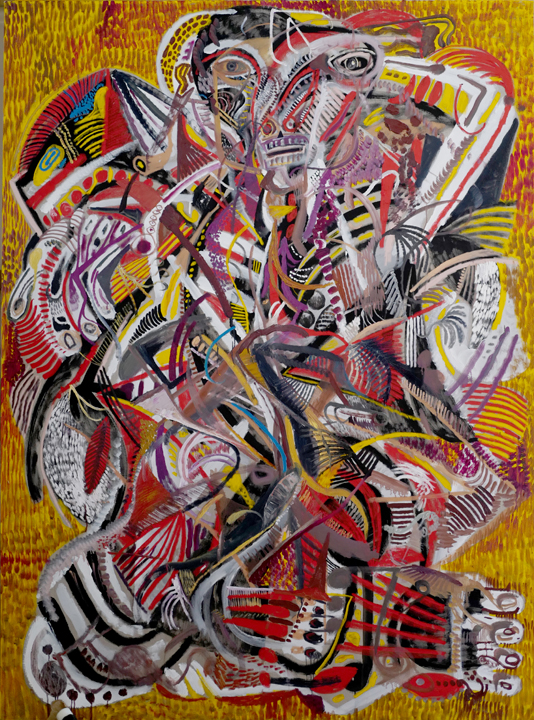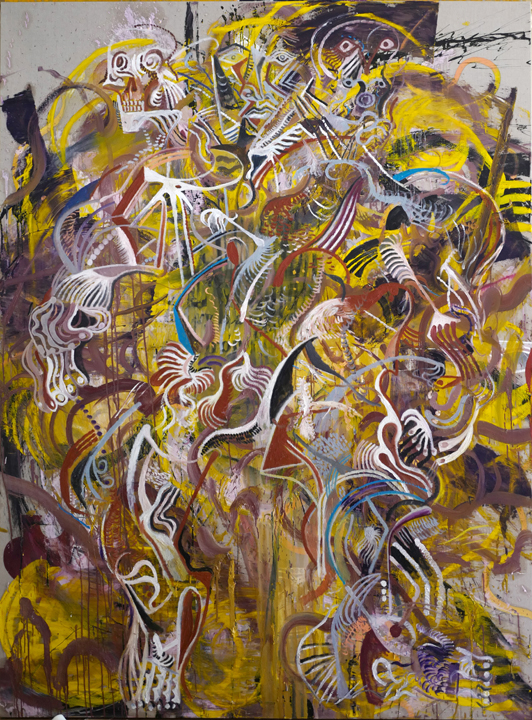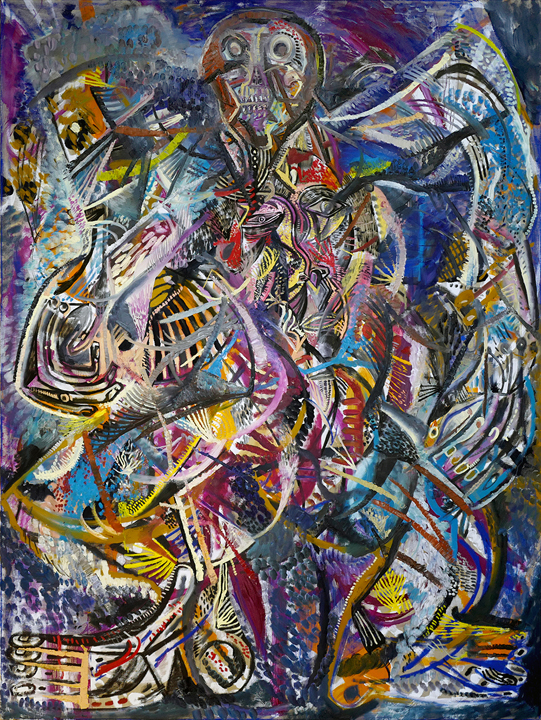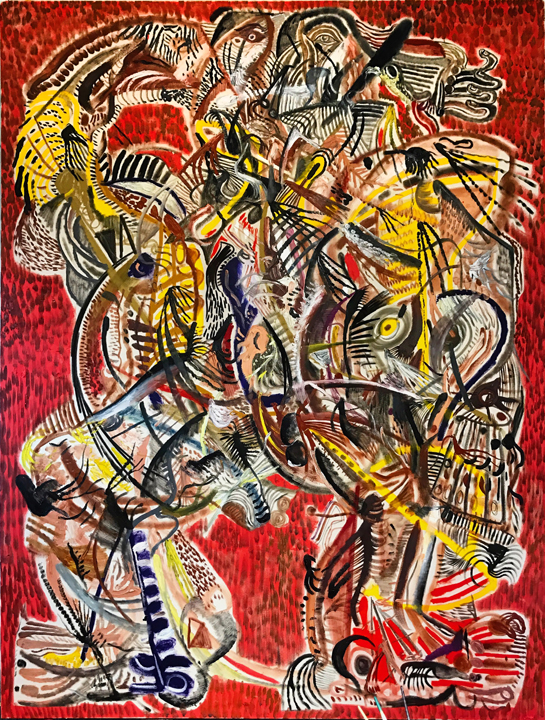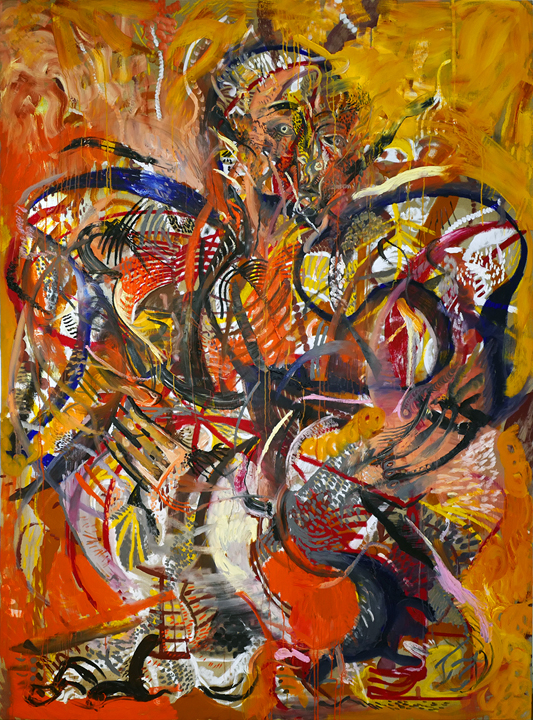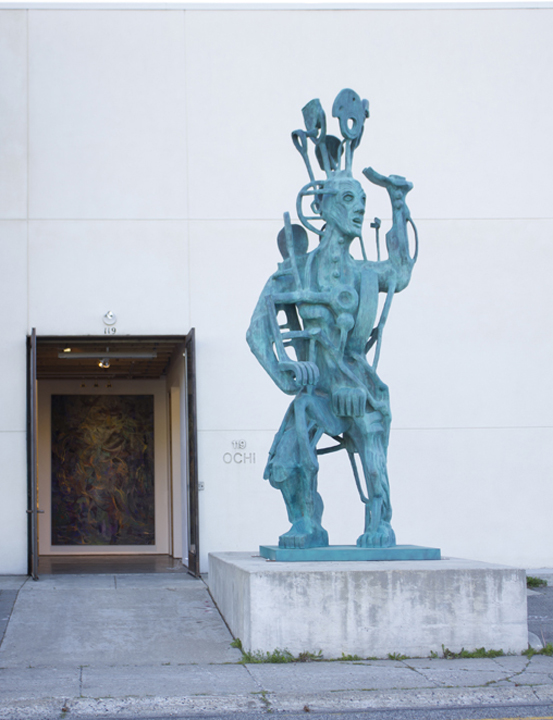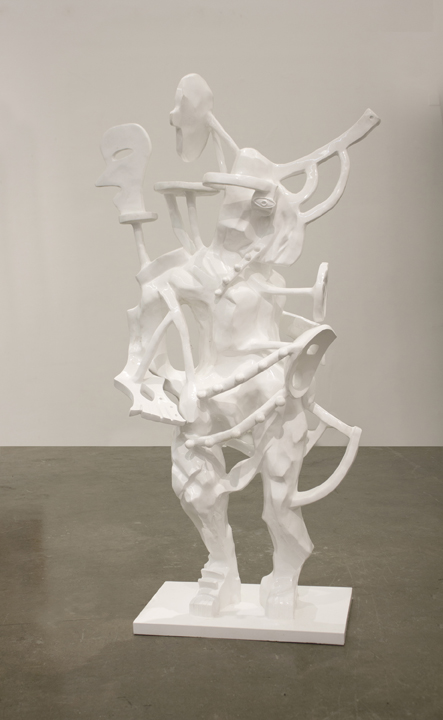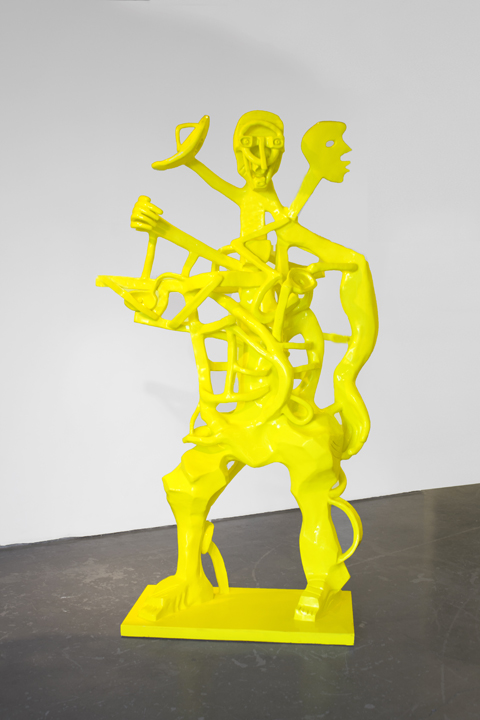ZIO ZIEGLER
In the age of the internet, what is a painting? What can paint on canvas represent now that we have Wikipedia and Google image search? Humanity is inundated with more images than in any previous time in history, while language is disintegrating into LOLspeak and emoji. We are more attuned to visual stimuli, but we are also more optically exhausted. Humans are living more proximate to each other than ever before, condensed in city centers ringed by urban sprawl, and connected via the ever multiplying swarm of social media networks. What can the slow, singular imagery of paintings say in the age of smartphones and selfies?
Zio Ziegler thinks of his works as Megaliths, monuments to this particular time in visual and technological culture. Ziegler creates icons, the distilled essence of an image upon which we can project our emotions and feelings, just like the golden calves of yore. This is not to say that his work is sparse or simplistic. He does not worship at the high church of austere Modernism. Instead, Ziegler paints chaotic masses of pattern that vibrate with the potential of energy. There is a shamanistic quality to these rhythms. They feel prelingual, and encourage the brain’s hardwired instinct to search for familiar patterns where none exist. Ziegler understands that pattern recognition is a form of faith, that language can, and is, being replaced by pictograms, which only function through the acceptance of all who use them. These definitions fluctuate over time, just as with words– which are, after all, just strings of symbols– adapt their meanings to the contemporary needs of society.
In this particular body of work, the icon Ziegler is describing is the figure. Arms and legs revolve around the edges of compositions that swirl around central cores. Your mind begs to identify a face, a likeness, a wisp of humanity in the commotion, surely that is an eye there? Perhaps a toothy grin? Ziegler admits to attempting to create tabula rasa through figuration. He strives for a humanity that is a blank slate, the beginning, genesis. For him, the primitive form is the most honest; the basics of mark making were instilled in him from childhood, surrounded by his parents’ collection of tribal artifacts, and later refined in the street art culture of his early career. Ziegler’s abstraction looks to the ancient, while never not being a part of the rush of new technology. His paintings are handmade representations of the same stories humans have always told ourselves, borne from the Library of Alexandria that is the present-day internet. Ziegler’s paintings have existed before and will exist after, living out a multitude of lives in time but also in cyberspace, just like us.
